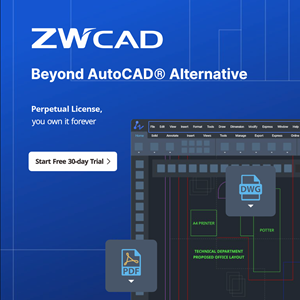It was great meeting Pravin Waghmare, CEO Prescient Technologies Pvt Ltd, a leading engineering software development company based in Pune, India. It was great to learn more about their offerings and trends in the CAD, CAE, PLM software development and KBE solutions development. In last 22 years Prescient Technologies have served over 75 clients in 12 countries and received various awards for the innovative work done in engineering software development. In this interview, Mr. Pravin explains how leveraging Knowledge-Based Engineering (KBE) can help companies to become more competitive, reduce time-to-market, improve product quality, and enhance customer satisfaction.
Can you tell us a bit about yourself?
Sure, my name is Pravin Waghmare. I did my Masters (IIT Bombay) 30 years back in Mechanical design. I was always highly passionate about that subject. Computer-Aided Design was upcoming, and I was lucky to get into software development in that field. Since then, I have worked in the software development space for design, engineering, and allied fields. I enjoy developing algorithms, mathematics, and engineering in general. I founded Prescient Technologies in Dec 2000 and working in the same area.
Please tell us about your company Prescient Technologies, when it started, milestones, services offered, KBE projects are done, etc.
Prescient Technologies is an Engineering Software Development company based in Pune, India, offering algorithmic, mathematical, and engineering software solutions. Our core competence lies in developing software based on our expertise in Geometry, CAD, Image Processing, Vision, Optimization, Machine Learning / AI, etc.
We started our journey in 2000 and have since been working with the leading R&D and Engineering teams, offering them our software development services. We have added value to our clients by solving their complex problems. Our expertise in developing CAD software has been a significant asset to our clients.
Prescient has two sets of clients. The first set comprises CAD/PLM software development companies themselves. We help them through our technologies and our software development services based on our expertise in this area.
We gradually added our second set of clients, and they are Engineering companies. Our KBE solutions development is part of our offerings to Engineering companies. The design offices in the Engineering companies are the users of KBE. Apart from that, we offer digital transformation services to manufacturing plants. They include connecting different systems to improve productivity making manufacturing plants paperless, and with the advent of sensors, Industry 4.0 solutions.
We have earned the trust of our clients worldwide through our single-pointed focus on quality. We are primarily core engineers who are also programmers. That helps us understand engineering problems very well. We guide our processes by leading industry standards like ISO and CMMI.
We have also completed various Knowledge-Based Engineering (KBE) projects to enable the automation and customization of their design processes. They range from crane design, hydraulic channel design to roof design of houses.
What is knowledge-based engineering, and what are the sectors and applications where it is widely used?
Knowledge-Based Engineering (KBE) is an approach to product development that involves capturing and automating engineering knowledge and rules in software systems. Software systems available off the shelf are usually generic systems. Any engineering company usually uses them to design components or products of a certain type. A lot of know-how about their design processes can be coded on top of the software they use. That reduces the repetition of work and also adds quality.
KBE has various applications across various sectors, including aerospace, automotive, defense, industrial machinery, and medical devices. It is used for designing complex products and systems, such as engines, turbines, robots, and prosthetics. KBE can automate tasks like design generation, analysis, optimization, and validation.
At Prescient Technologies, we specialize in KBE solutions that help our clients to automate and optimize their design and engineering processes. Our KBE offerings include design automation, specialized features, validators/checkers, engineering calculators, and product configurators. These solutions can be tailored to meet specific design requirements and can reduce the design cycle time significantly.
We believe that KBE is a game-changer for the engineering industry, and its adoption will lead to increased productivity, efficiency, and cost-effectiveness. By leveraging KBE, companies can reduce time-to-market, improve product quality, and enhance customer satisfaction.
How does KBE approach to product development use artificial intelligence (AI) and machine learning (ML) to enable the automation and customization of design processes.?
I would say that using artificial intelligence (AI) and machine learning (ML) is definitely on the horizon for KBE. Here, the usage of AI and ML would need enough data to make the systems learn. Currently, I rarely see the use of AI/ML here.
Does KBE integrate the overall design cycle, or is it limited only to the automation of CAD software? What is the role of KBE with CAE, PDM, and PLM tools?
That’s a very good question. Usually, KBE is referred to from the design perspective, but it does not have to stay there. For one of our clients, we have connected their costing database to the design solution, generating the costing sheet in real time. So, yes, KBE solutions should be thought beyond just designs. Connecting PLM or ERP systems should be considered while developing them.
What are the benefits of using KBE over the traditional product development process? Would you like to share some user case or project done for your client?
There are several benefits of using KBE over traditional product development processes. KBE helps to reduce the design cycle time, improve design quality, and increase design consistency. KBE also enables the reuse of design knowledge, which reduces the risk of errors and increases the efficiency of the design process. One of our client’s success stories is developing a KBE-based tool for a major automotive company, which helped them reduce the design cycle time of a particular component by up to 40%.
What are the steps in implementing KBE? Does it support Cloud-based CAD, and CAE tools?
Implementing KBE typically involves several steps, including identifying the knowledge to be captured, developing the knowledge representation, implementing the KBE system, and validating the KBE system. These steps are critical to ensuring the KBE system is accurate, effective, and useful to the design process.
In addition, KBE can support Cloud-based CAD and CAE tools, which allows for greater flexibility and accessibility to the KBE system across different locations and teams. This feature can also reduce infrastructure costs and streamline the design process.
How is the demand for KBE in India?
The demand for KBE in India is increasing, especially in sectors such as automotive, their suppliers, heavy engineering, and machine building companies. Indian companies are increasingly adopting KBE to improve their design processes and stay competitive in the global market.
Any message to design professionals and companies to become more competitive?
My message to design professionals and companies would be to stay up-to-date with the latest technologies and adopt new approaches, such as KBE, to remain competitive. In today’s fast-paced environment, it is essential to be agile and adopt new technologies to stay ahead of the competition.
“We believe that KBE is a game-changer for the engineering industry, and its adoption will lead to increased productivity, efficiency, and cost-effectiveness. – Pravin Waghmare, CEO Prescient Technologies.
I would like to thank Mr. Pravin Waghmare for taking the time to answer my questions. If you have any questions for him or you want to know more about KBE or CAD,PLM Software Development, please leave a comment below or mail me on sachin@dailycadcam.com and we will be glad to answer.
If interested in learning more about the KBE, discuss with Mr. Pravin Waghmare, Please join us on May 10, 2023 for the Live Webinar by https://www.pre-scient.com – Register now https://forms.gle/aBuMjHyyEQe3Nb4D9






